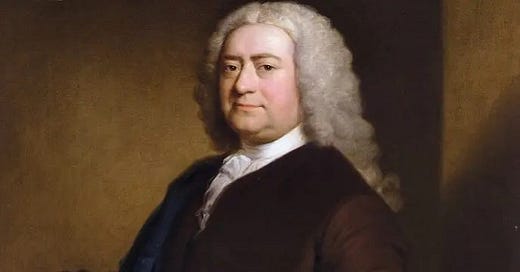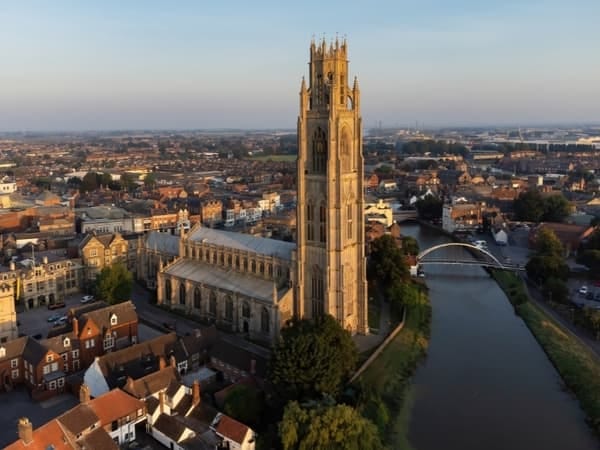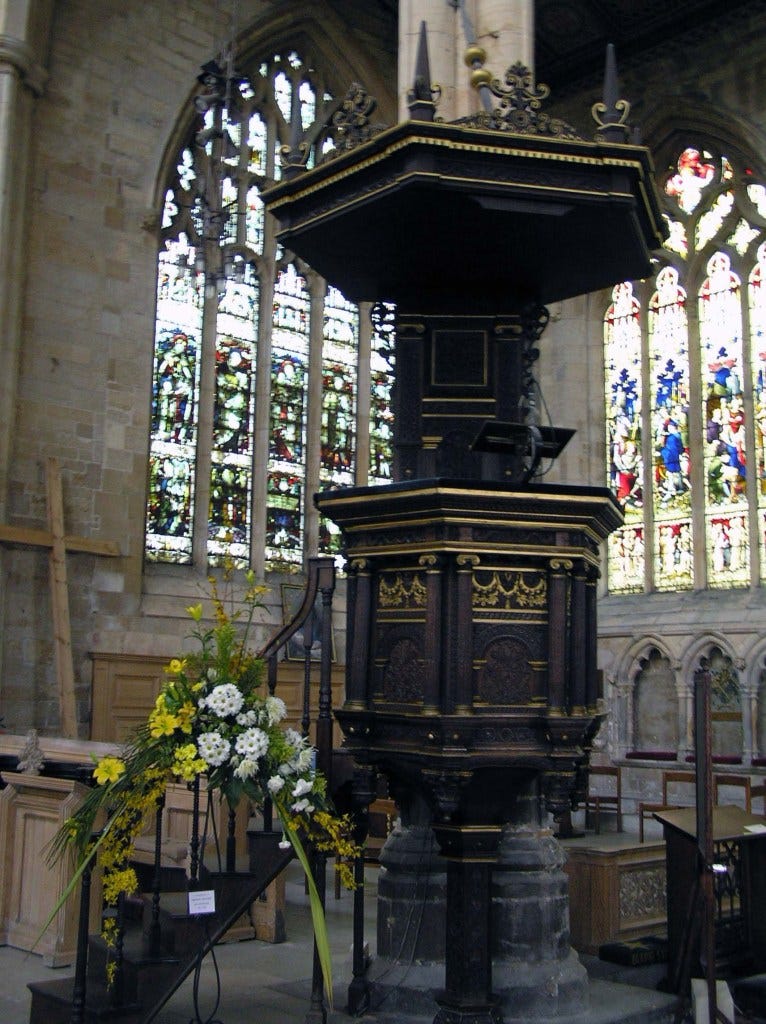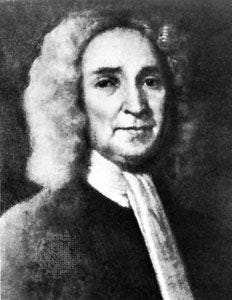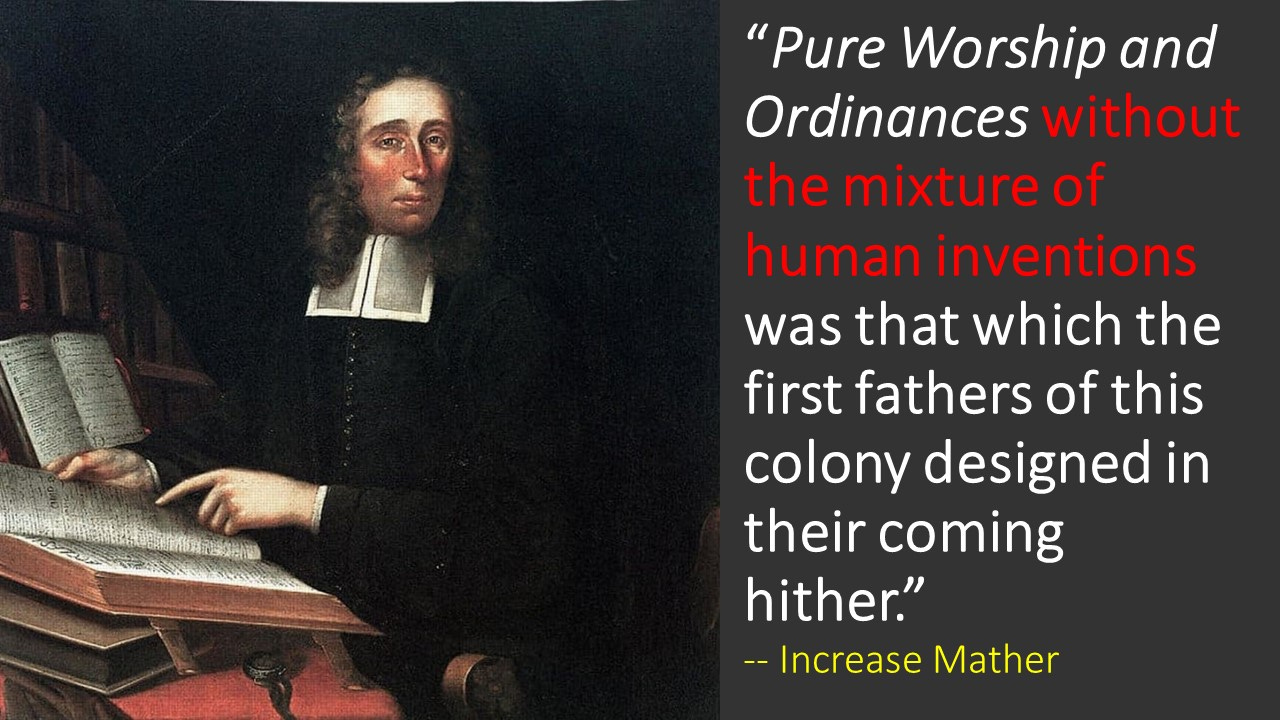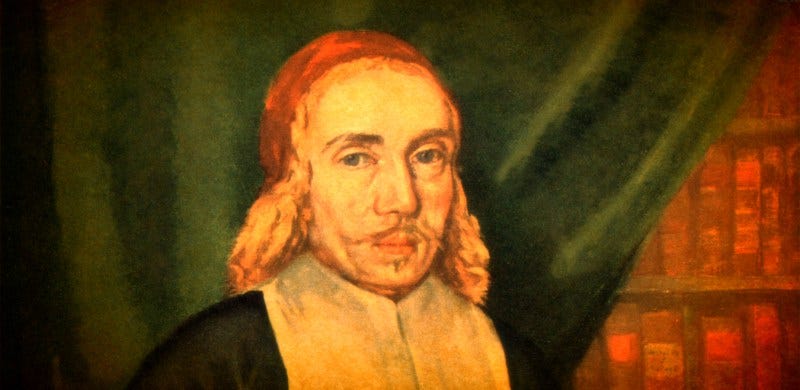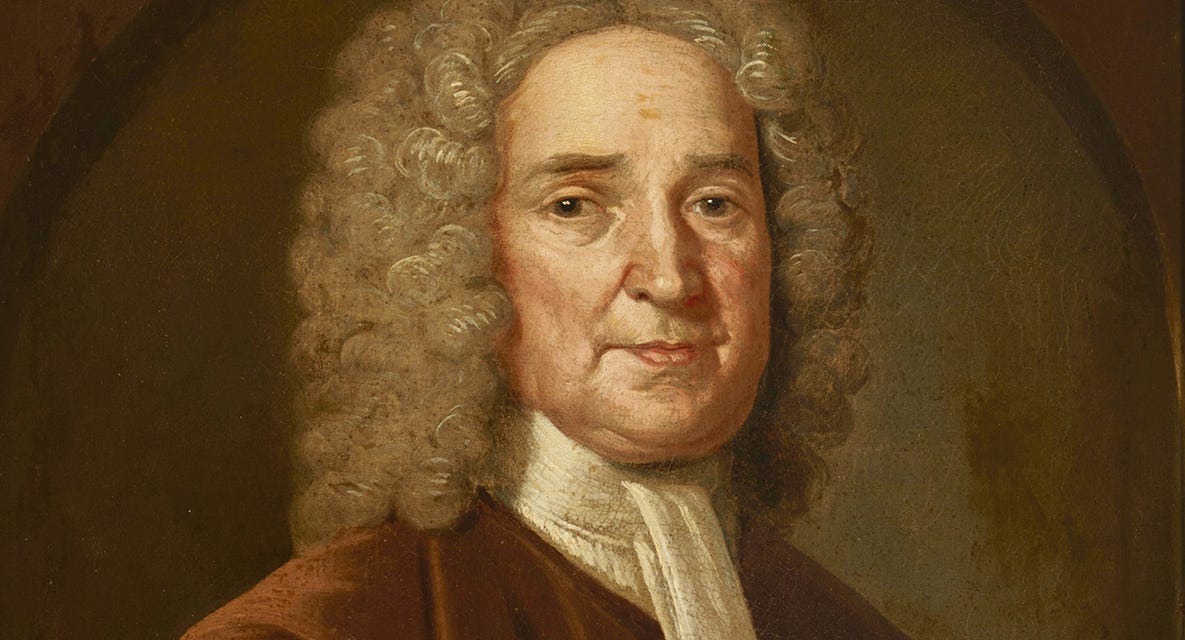John Cotton was born in England in 1585, the son of a lawyer, raised in the Church of England, sent to Cambridge University, poised to enjoy all the rewards of a professional life in England, the best career; not one of the nobility but very much a part of the establishment.
At Cambridge, he was troubled by the preaching of the leading Puritan minister William Perkins. He also became a noted scholar who likely could have made a career as an academic, teaching languages, like Hebrew and Greek. But, by 1610, he left the university, was ordained as a priest in the Church of England, and become the “vicar” (they call it) of St. Botolph’s Church in Boston, England, with it’s grand, historical building, complete with an ornate spire. There he became famous for his fancy preaching, with polished, flowery, scholarly sermons.
St. Boloph’s Church, Boston, England
But he came to believe he wasn’t truly converted, uncertain of his salvation. For three years, he desperately searched whether he was predestined to glory, going through what John Bunyan called the “slough of despond” (i.e. the swamp of conviction). Puritan pastor and scholar Richard Sibbes ministered to him. Sibbes, a “physician of the soul,” encouraged Cotton to respond to the gospel. Finally, in 1612, while listening to Sibbes preach on regeneration, Cotton “look[ed] unto Christ for healing” and was saved.[1]
Richard Sibbes
Once converted, his style of preaching became simpler and more direct, thus disappointing those who liked his formerly polished, flowery, scholarly sermons. But Cotton drew standing-room-only crowds from near and far. Some people, even a number of significant gentry families, relocated to Boston in order to join his congregation. Through his “legendary” three-hour sermons, listeners stood in the church’s nave. The pulpit installed for Cotton in 1612 is still in use today.[2]
St. Boloph’s pulpit, installed for John Cotton
Cotton was Puritan in that he believed in the doctrines of grace and the regulative principle of worship (that is, worship should only include what is taught in scripture) but sought to be flexible about “things indifferent” (the adiaphora, they called it), debatable things, like the gowns the ministers were supposed to wear, making the sign of the cross at baptisms, many of the traditions of the Church of England. He didn’t believe in them himself but didn’t believe he had to separate from the church just because they did those things. He was a non-separating Puritan, meaning he wanted the church to reform to be Biblical and cleanse itself of old traditions – like having bishops, observing saints’ days – but he wasn’t willing to leave the church over them yet. After all, he had a living and an influential position. He had a lot to lose. So, he would stay in the traditional church but not conform to the practices he objected to.
Cotton’s non-separating nonconformity worked well for him until Charles I became king in 1625. Charles I was determined to make the Puritans conform. Finally, in 1632 Cotton received summons to the High Court for his non-conformity. A friend in the government warned him, “you must fly for your safety.” He went into hiding. He decided to flee to the new Puritan colony in America: the Massachusetts Bay Colony. In the summer of 1633, at the age of 48-years-old, he boarded the ship Griffin with his wife and step-daughter. His wife was pregnant and she gave birth to a son on the journey and they named him Seaborn. Once in Massachusetts, he settled in the new town named after his previous home in England: Boston. Rather than the grand building of his church in England, he was now preaching in a “meetinghouse” (they called it) that was small and windowless, with clay walls and a thatched roof. He could have stayed in England, in his cushy life, be a respectable scholar and minister, just wear the gown, make the gestures, follow the bishops and traditions. But, his son-in-law, Increase Mather, testified that John Cotton and the other “first fathers of this colony” “ventured themselves and their little ones upon the rude waves of the vast ocean” for “Pure Worship and Ordinances without the mixture of human inventions.”
John Cotton, like all Puritan Congregationalists, believed in the importance of regenerate church membership, that the only people who should be members of a church are those we can reasonably believe are born again. He wrote, “The church . . . is, Caetus fidelium [a group of believers], a Communion of Saints, a combination of faithful godly men, meeting for that end, by common and joint consent, into one congregation; which is commonly called a particular visible church.”[3]
Cotton had sacrificed much, unwilling to compromise his conviction, risked his life, with a pregnant wife, crossing the Atlantic Ocean on a rickety sail boat, at a time when ship wrecks were common. He sacrificed a lucrative career, in an ornate, Cathedral-style building, in a respectable church making a good living, in order to preach to a few pioneers in a mud hut in the “howling wilderness” all because of his Puritan principles, because he refused to compromise the Word of God for man-made traditions, because that’s what faith made him do.
Soon after John Cotton’s arrival in America, a revival ensued among the new colonists and public testimonies were common. So they soon required these public testimonies for admission to church membership. “For the first time in Christendom,” claims Sydney Ahlstrom, “a state church with vigorous conceptions of enforced uniformity in belief and practice was requiring an internal, experiential test of church membership.”[4] This began the tradition of “testified regenerate membership.” This practice preserved two Puritan traits that would be portentous for the Great Awakening and the later Baptists: a commitment to a church of visible saints and to the experiential reality of God’s regenerative work.
John Cotton while still in England, remained committed to both his parish (all the people in his ecclesiastical territory) and to his covenanted church-within-a-church. But even Cotton considered the covenanted group “the essential church.” Its members were bound together “in nearer fellowship with God and one another.”[5] By the time he emigrated to New England, he had apparently been fully converted to the logic of congregationalism and concluded “mutual covenant one with another . . . gives the first being to a church,” for “that which doth not give them jurisdiction or power over one another, makes them not a Church by divine right.”[6] This teaching and practice was inherited by the Baptists.
John Cotton
John Cotton staked his life, his career, his family, daringly confident that worshipping God God’s way is worth the sacrifice and the risk. He became the most important minister in the first generation of New England. His daughter married Increase Mather who became the most important minister in the second generation and their son, John Cotton’s grandson, named Cotton Mather, became the most important minister of the third generation.
John Cotton ventured himself and his family upon the rude waves of the vast ocean, to set up church in a mud hut, because worshipping God God’s way was that valuable.
For a sermon on 1 Samuel 26-27 using John Cotton as an example of a man whose faith made him sacrifice, listen:
(the first 6.5 minutes are reading 1 Samuel 26:1-28:2)
Covenant Reformed Baptist Church is Caswell County’s/Danville’s Puritan Church.
[1] https://tabletalkmagazine.com/posts/the-two-conversions-of-john-cotton-2019-08/.
[2] https://britishheritage.com/travel/history-st-botolphs-and-john-cotton.
[3] John Cotton, The Way of the Churches of Christ in New-England, Measured by the Golden Reed of the Sanctuary (London: Matthew Simmons, 1645), republished Shropshire, England: Quinta Press, 2008, 5.
[4] Sydney Ahlstrom, A Religious History of the American People (New Haven: Yale University Press, 1972), 146.
[5] Darrett Rutman, American Puritanism: Faith and Practice (Philadelphia: J. B. Lippincott Company, 1970), 24.
[6] John Cotton, The Way of Congregational Churches Cleared, 54; according to Rutman, American Puritanism, 110.

